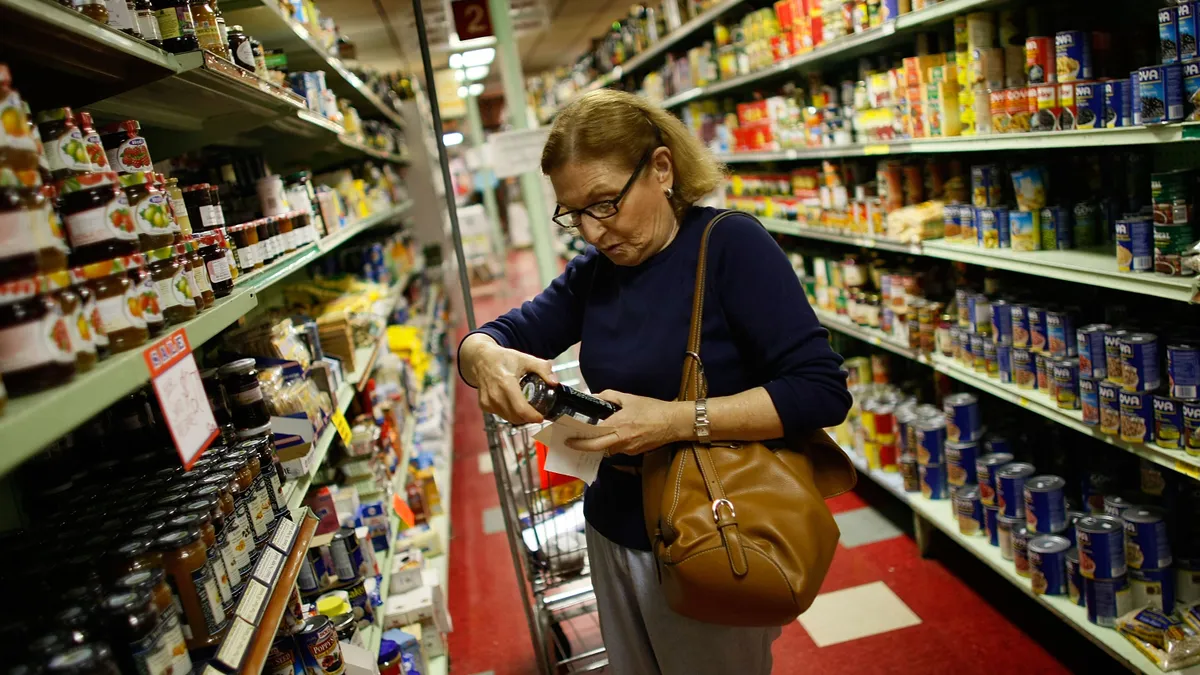Dive Brief:
- A recent surge in inflation likely heralds a decades-long trend of rising prices, fueled by a retreat in globalization, the aging of populations in China and developed countries and the costs from servicing swelling government debt and adapting to climate change, economists said in an American Enterprise Institute webinar.
-
The Consumer Price Index rose 5% in May from a year earlier in the biggest inflation gain since Aug. 2008, the Labor Department said today, following a 4.2% increase for the year ended in April.
-
Higher prices for used cars and trucks accounted for much of the inflationary increase in May, yet a broad range of other products also pushed up the index, including household furnishings, new vehicles, airline fares and apparel, the Labor Department said.
Dive Insight:
CFOs, as part of scenario planning, may want to consider several ways to buffer against a sustained rise in prices, according to economists and financial executives.
Such steps include building inventories at current prices, issuing debt at today’s unusually low interest rates and hedging against a depreciating dollar, they said. CFOs would also do well to consider moving a portion of their company investment portfolios into gold, Treasury inflation-protected securities (TIPS) and other backstops against rising prices.
Inflation has increased amid a snap-back in economic growth and record fiscal and monetary stimulus, including a commitment by the Federal Reserve to indefinitely continue monthly purchases of $120 billion in Treasury and mortgage bonds. With vaccination widespread and after months of stay-at-home austerity, consumers are ready to spend again.
“On top of the fiscal policy, on top of the monetary easing, you’ve got this pent-up demand that now you’d expect to be released as we go back to normal,” Desmond Lachman, an AEI fellow and former deputy director of the International Monetary Fund, said. “I just can’t see how you’re not going to get inflation.”
Rather than combat inflation, Fed policy makers plan to let it exceed their 2% target to make up for past shortfalls and reduce unemployment, now at 5.8%.
“We have the strongest economic growth in the U.S. in more than 40 years, in the loosest financial conditions in the history of the world with the loosest mix of monetary and fiscal policy,” Kevin Warsh, a Hoover Institution fellow and former Fed governor, told the AEI panel on June 8.
The Fed and Biden administration say that the big jump in prices is transitory and a consequence of the strong recovery from the pandemic.
Inflation will eventually slow as a flare-up in demand fades and supply bottlenecks ease, they say. Price increases may be especially high in coming months because of “base effects,” or comparisons with low inflation during the depths of the pandemic last year.
Yet some economists see high inflation persisting for as long as 30 years, noting a reversal in demographic and other sweeping trends that increased the availability of labor and held down price increases for decades.
Populations are aging, and workforce growth is slowing in China and most advanced economies, creating upward pressure on both wages and government spending, according to Charles Goodhart, a former member of the Bank of England’s Monetary Policy Committee.
Meanwhile, globalization is in retreat as countries erect roadblocks to migration and the exchange of goods, services and capital.
“These underlying trends of globalization and demography are changing,” said Goodhart, co-author of "The Great Demographic Reversal: Ageing Societies, Waning Inequality and an Inflation Revival." “We think that over the next three decades, rather than being disinflationary, they will be inflationary.”
In addition, “the effect of dealing with climate change is likely to bring about very strong additional expenditures and even more inflationary forces,” Goodhart told the AEI panel.
Whether an inflation optimist or pessimist, a central banker has at best a cloudy view of what lies ahead for prices, Warsh said.
“Do we or the Federal Reserve or the economics profession generally have a robust model to predict inflation?” he asked the panel. “I’d suggest the answer to that is, ‘No.’”













